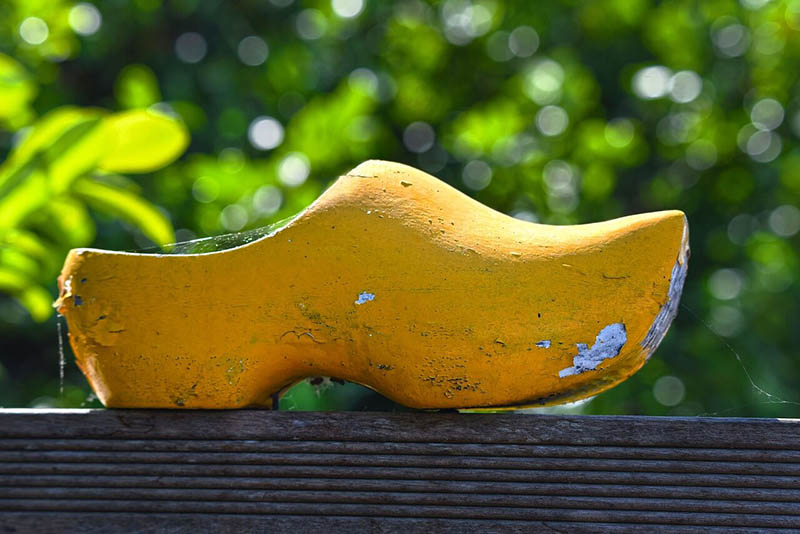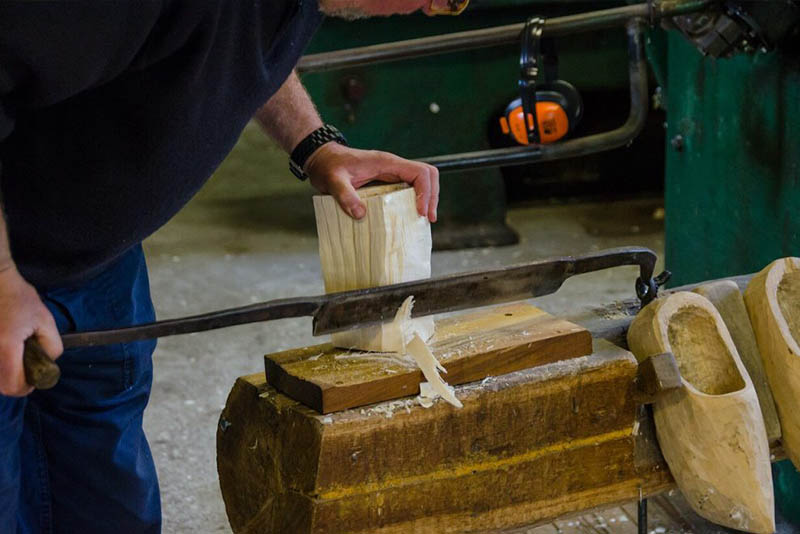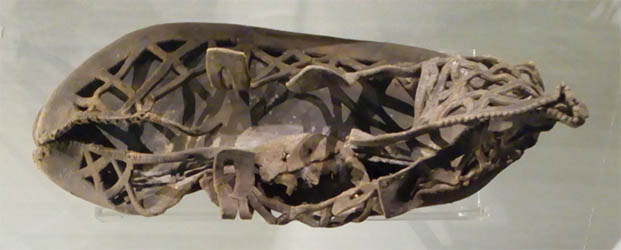Let’s go back in time. When did it all start?
The exact beginning of the history of footwear is difficult to establish with precision but goldengooseforsale.com has gathered some information for you. The easy perishability of the organic material that was initially used by prehistoric populations, having the sole purpose of protecting the feet in the shoe, has not made it possible to reach us of ancient remains of that era.

There is talk of primitive shoes consisting of untanned leathers and secured to the foot by the use of a system of laces of the same material. Vegetable fiber soles were also produced intertwined and stopped at the foot with the same system.
In 2010, the oldest shoe in the world, dating back to around 3,500 BC, was found during an archaeological excavation in a cave in Armenia. Found incredibly in excellent condition and corresponding to the current size of a woman’s shoe of size 37 and a half, it is made up of a single piece of cowhide, fastened both in the front and in the back with a leather cord.
The first depictions of footwear worn by human date back to about 15,000 years ago in Spanish rock paintings in caves or on stone walls.
Since the era of the ancient Egyptians, footwear has assumed a significant character in social distinction. The commoners mostly went barefoot, while the high-ranking men wore footwear. There was also an honorary position of “Sandal Bearer” for people following pharaohs and nobles. Due to the climate of their territory, the Egyptians produced and used sandals. They are made of leathers tanned with vegetable oils and animal fats and were subsequently cleaned from the residues of fat and meat by means of scrapers, stretched on looms and immersed in fat baths. They featured a sole made of leather, wood, papyrus, rush or intertwined palm leaves secured to the foot with the flip-flop system. The ancient artifacts that have come down to us are kept at the Egyptian Museum in Cairo and at the British Museum in London.
Even the ancient Middle Eastern peoples, in addition to farming and breeding practices, developed numerous craft and trade activities, including those relating to the tanning of leathers and the manufacture of footwear.

The Sumerians (ca 3,500 BC – ca 2,000 BC) originating from the southern part of Mesopotamia created new different tanning techniques including, fat tanning with oils, mineral tanning with alum and vegetable tanning with tannin extracted from gall nuts. The coloring of the leathers made was black, white and red.
Even the Hittites (2,000 BC – 1,100 BC) Indo-European people of the mountainous regions of Anatolia, developed the tanning of skins with tannin extracted from gall nuts. The shoes they produced, as a consequence of the territory they settled, were robust and with the tip turned upwards. Evidence is present in the bas-reliefs preserved in the British Museum, where the Egyptians depicted the Hittites wearing shoes of this type.
The Assyrians (2,000 BC – 612 BC) perfected these tanning techniques. They managed to make real knee-high boots, especially suitable for riding and for the use of war chariots. The social distinction between Assyrians was marked by the color of the coloring, red for the nobles and yellow for the middle class.
The Babylonians(2,000 BC – 539 BC) similarly to the Sumerians used sandals, introducing embroidery and decorations by means of metallic applications. The other peoples of the neighboring regions such as the Persians (ca 700 BC – 331 BC), the Jews (2,000 BC – 44 AD), the Phoenicians (2,000 BC – 64 BC), the Shiites (1,500 BC – 100 AD) adopted and developed their own techniques of creation of footwear that differed from sandals to boots depending on the typology of inhabited region.
In ancient Greece (2,000 BC – 146 BC) footwear began to take on the various basic shapes we know today.
The main types of footwear used were: the “Upodémata”, the classic Greek sandal consisting of a sole of leather, wood or esparto stopped at the foot by corrections (strips) of leather, or the “Krepis” travel sandals in which the sole for women could also be made of cork; the “Embàs”, half-leg laced ankle boots; the “Embàtes”, boot of leather or cloth for the riders; the “Endromides”, ankle boot for hunting and traveling, up to half-leg high; the “Akatioi”, shoes with a raised toe; and the “Kothornoi”, a shoe with a thick sole and upper in soft leather high at the calf and laced with red straps.
The ancient Romans (750 BC – 476 AD) influenced by the neighboring peoples of the Etruscans, Greeks, Gauls and Germans used similar tanning technique with alum, fats and vegetable products containing tannin including sumac, gall nuts, pine and oak bark.
With the evolution of society, the shoes eventually became, for the Romans, a characteristic element of the social status of the wearer. The high-ranking citizens used the “Calcei”, consisting of no heel soles accompanied by leather uppers that wrapped around the foot. The black “Calcei senatorii” were worn by Roman senators, while in red by representatives of the highest civilian positions, who on the occasion of patrician ceremonies were formed by a very thick sole, the “Mullei” thick in order to raise the stature.
The commoners and peasants wore another type of shoe, the most commonly used called “Perones”, a shoe with a flat sole and an ankle-high leather upper.
While the shoes used by farmers and soldiers to face long journeys on rough terrain were the “Caligae” formed by a thick sole, without heel and studded with tacks.
During the Franks(III century AD – IX century AD), an ancient Germanic people, the fashion of the shoe à la “Poulaine” began, with a shape whose toe was initially equal to half the foot and later developed with a longer length. The “Poulaines” at first were worn only by the nobles, and when the length increased, laws were enacted that fixed the lengths for nobles, bourgeois and commoners.
In the 12th century, the Venetian shoemakers, gathered in guilds called the “Caleghéri e Zavateri” (shoemakers and cobblers), including special categories of cobblers such as that of the “Solarii” who exclusively produced soles for shoes and stockings (a sort of which was applied a leather sole) and that of the “Patitari” who produced clogs called “Patitos”, footwear with sheepskin upper and high sole. Among the women’s shoes, the clogs called “Socchi” and “Zanghe”, with a wooden and cork sole, stood out.

In France, Charles VIII (15th century) launched the fashion of “À bec de cane” (duck’s beak) shoes. This fashion also spread to Germany, here called “Entenschnäbel”, where the shoes were made using the welt method, a strip of leather sewn on one side to the partition and on the other to the sole.
In the 16th century in France the fashion, launched by Caterina de ‘Medici, of heeled shoes called “Souliers à pont” was born.
In the 17th century, the nobles and the wealthy began to wear boots, initially knee-high and later thigh-high and splayed. The ladies reserved the use of slippers and shoes, often with silk or velvet uppers to which gold or silver threads and embossed embroidery were applied. Heeled boots were also used, and in France the fashion for red heels was born, the “talons rouges”, used by nobles as a distinctive sign.
In the 18th century, in Italy the ladies used summer and winter shoes with pointed-toe uppers in leather, while gentlemen wore low-heeled shoes with square-toed black leather uppers and with the tongue going up to the instep. In France, the ladies wore shoes with a slightly raised tip called “À la mahonnaise” or slippers called “Chaussons”. He also continued the use of decorated and carved heels that had the name of “venez y voir” the famous Louis XV heel.
In the 19th century, the aristocracy began to wear slippers with very thin uppers and soles called “Pantofles à la poulaine” and “Nonchalantes”, while in the countryside the peasants generally used clogs, and shoes were used only on Sundays.
In the 20th century, shoes took on a prominent role in fashion like never before. At the beginning of the 1900s, the French genius of the beautiful Paris, the art noveau, dominated. The most popular shoes had an elongated toe shape and a high neckline. In the pre-war period the most common form was the “Luigi” heel, inspired by Rococo shoes, with the typical spool shape.
Subsequently, with the gradual diffusion of shorter skirts, such as those up to the ankle, the “Balmoral” ankle boots, from the Crockett and Jones laboratory of Northampton, a shoe with an elongated toe upper and tapered shape, with a high and very tight collar closed by buttons on the front. In this period, evening shoes and especially for dance shoes also began to spread, provided with greater comfort and stability without neglecting elegance.
While for daily activities, or for sports and outdoor activities, such as golf, walking and cycling, ankle boots with buttoned gaiters were used.
In the post-war period, fashion is led by France with the revolution dictated by Coco Chanel. Italy too is slowly starting to take on its leading role thanks to Salvatore Ferragamo, who will be one of the most influential footwear designers of the twentieth century, famous for his cork wedge shoe.
From 1950 onwards the rise of Italian fashion begins, Rome, Florence and Milan begin the competition to win the title of fashion capital. These are the years in which sandals and décolleté are developed.
In the 60’s gaze turned to London, is where are all of the latest trends, and from there spartano new trends such as Pop Art.
In the 70`s and 80s Italy returns to be a leader in the field of fashion triumphing with the creativity and quality of its Made in Italy of the most prestigious brands: Armani, Valentino, Ferrè and Versace.
The 90`s are instead characterized by a more austere and minimal fashion where black dominates.
In recent years, however, all the rules have jumped and, thanks to the globalization of the market and with it habits, fashion follows any type of trend using colors, shapes, materials and fabrics of all kinds. People have much more choices depends on purpose, personality, mood and passions. Sometimes we all buy shoes, just to have them.


